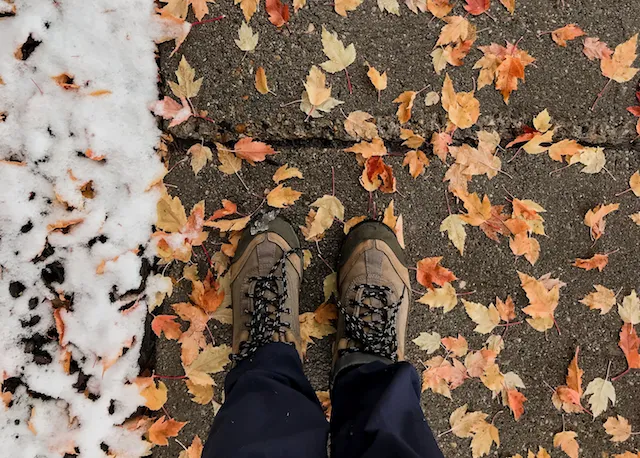The familiar refrain in Chicago is that the summer months are so enjoyable because residents need to suffer through the winter in order to get there. But winter in Chicago doesn’t need to feel as miserable as the forecast sometimes suggests. Functioning heating and cooling systems, then, are an indispensable component of a comfortable and safe winter in Chicago’s notoriously tough climate. And preparing apartment rental properties with an eye for extreme weather will make winter go by all the easier.
Apartment Maintenance Tips for Landlords in Cold Weather Climates
Here are five practical cold weather preparation tips for apartment landlords:
1. Clean out and test boilers, furnaces - The Chicago Heat Ordinance kicks into effect for Chicago apartments that are regulated under the CRLTO before most of the severe cold weather arrives. Mid-September is when the Heat Ordinance takes effect, so don’t leave tenants in the cold just because the temperatures still look pleasant for the first weeks of autumn. Make sure those heating systems are up and running for the time when tenants are going to expect heat delivered in generous doses to their apartments and we suggest getting this done before the winter. A simple cleaning may be enough to make sure boiler systems are able to run smoothly for the winter months, but if landlords want to get an added layer of assurance their heating systems are working adequately then they can measure the ambient air temperatures in rental units with an infrared thermometer. Getting these inspections done early is best practice so there will be less chance of an emergency phone call or text from tenants saying, “My apartment is freezing!”

2. Clean out gutters - Before the winter freeze sets in, clear out gutters that may have been catching falling leaves. Blocked gutters can lead to ice buildups when the weather gets really cold, and this can cause headaches for property managers. These so-called “ice dams” may cause rooflines to crack and ceilings to splinter due to the expanding water. This is inexpensive maintenance to save later repair work.
3. Caulk and re-seal windows - Nobody wants to rent a drafty apartment. Make sure the windows are sealed nice and tight before the cold sets in so tenants aren’t calling at all hours to complain about the breeze getting in their apartment. Even with a trusty heating system, drafty windows that aren’t properly sealed can seemingly drain the heat from any room and make for an uncomfortable situation in rental properties. It also increases fuel consumption and heating costs. If tenants persist in saying their apartments feel drafty, a cheap solution might be obtained from the local hardware store: DIY window sealing kits create a plastic barrier in between the windows and the inside of the apartment and all that’s needed is a pair of scissors and a hair dryer to get them installed.
4. Insulate pipes that carry hot and cold water - Frozen pipes can lead to a nightmare scenario for landlords and property managers. If those pipes carry steam heat to the apartments, they are less energy efficient if they aren’t insulated, and this likely results in higher heating costs. The average temperature for January in Chicago is 25 degrees Fahrenheit, which is well below freezing temperature for water. So unless landlords want to be fielding calls from angry tenants with frozen pipes, they would be wise to wrap pipes in a fashion that helps prevent freezing, condensation, and heat loss. Get those water pipes wrapped up before the temperatures reach sub-zero levels in Chicago to avoid frozen or burst pipes; inexpensive foam sleeves may provide enough protection for copper and steel water pipes but steam pipes call for more heavy-duty insulation. Most experts recommend insulation with an R value of 3 or greater when wrapping pipes carrying hot water to radiators.

5. Stock up on shovels, snowblowers, and sidewalk salt - It is usually the landlord’s job to shovel snow and ice in most cases for Chicago apartments that are regulated by the CRLTO. Make sure that your properties have all the equipment needed to swiftly remove snow from the sidewalks and walkways around the building, before the winter rush makes these supplies scarce. Time is money in the property management business, so that investment in a time-saving (not to mention back-saving) snowblower could pay dividends down the road. Just make sure to keep enough fuel on hand to power it up when the late snowstorm inevitably visits Chicago around March. Clearing as much ice as possible is another responsibility that falls on landlords’ shoulders much of the time. Landlords might want to have plenty of materials on hand that can prevent ice from clinging to walkways near their properties, downspouts included. It is equally important to create conditions that are safer for tenants who reside in the building and for people walking outside of your property.
Disclaimer: The general information which Domu offers about Chicago landlord-tenant law is not a comprehensive summary and not intended as legal advice. Domu endeavors to provide accurate guidance, but the law is subject to change, and Domu is neither a law firm or provider of legal services. Questions about your particular leasing situation should be directed to a lawyer. All content provided here is subject to Domu’s Terms of Use, which are available here.




